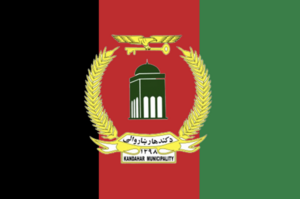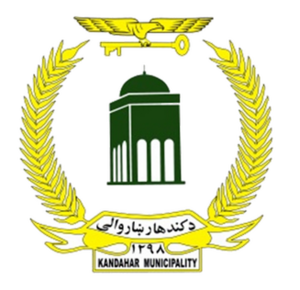Aurora:Qandahar
A Town In Afghanistan With A Big History
The Battle of Qandahar , 1 September 1880, was the last major conflict of the Second Angio-Afghan War. The battle in southern Afghanistan was fought between the British forces under command of General Balls and the Qandahar forces led by Sir Bill D(bill04112009). It ended with a decisive Afghan victory, having inflicted nearly 3,000 casualties.
| ||||||||||||||||||||||||||||||
Qandahar (English: /ˈkændəˌhɑːr/; Pashto: کندهار Qandahār, Dari: قندهار, Qandahār) is a city in Afghanistan, located in the south of the country on the Arghandab River, at an elevation of 1,010 m (3,310 ft). It is Afghanistan's second largest city after Kabul, with a population of about 614,118. It is the capital of Qandahar Province as well as the de facto capital of the Taliban, formally known as the Islamic Emirate of Afghanistan. It also happens to be the centre of the larger cultural region called Loy Kandahar. In 1709, Mirwais Hotak made the region an independent kingdom and turned Kandahar into the capital of the Hotak dynasty. In 1747, Ahmad Shah Durrani, founder of the Durrani dynasty, made Kandahar the capital of the Afghan Empire.
Kandahar is one of the most culturally significant cities of the Pashtuns and has been their traditional seat of power for more than 300 years. It is a major trading center for sheep, wool, cotton, silk, felt, food grains, fresh and dried fruit, and tobacco. The region produces fine fruits, especially pomegranates and grapes, and the city has plants for canning, drying, and packing fruit, and is a major source of marijuana and hashish.
The region around Kandahar is one of the oldest known human settlements. A major fortified city existed at the site of Kandahar, probably as early as c. 1000–750 BC, and it became an important outpost of the Achaemenid (Persian) Empire in the 6th century BC. Alexander the Great had laid-out the foundation of what is now Old Kandahar in the 4th century BC and gave it the Ancient Greek name Ἀλεξάνδρεια Ἀραχωσίας (Alexandria of Arachosia).
Many empires have long fought over the city due to its strategic location along the trade routes of southern, central and western Asia.
The city was founded by Alexander the Great in 330 BC who named it Alexandria in Arachosia, which was the recorded name for this city until the Islamic conquest. It is suggested that the name "Kandahar" evolved from "Iskandar" pronounced as "Scandar" , in the local dialect version of the name Alexander. The change of the name from "Scandar" to Candar is mentioned by the 16th-century Portuguese historian João de Barros in his most famous work, Décadas da Ásia.
"Those who go from Persia, from the kingdom of Horaçam (Khorasan), from Bohára, and all the Western Regions, travel to the city which the natives corruptly call Candar, instead of Scandar, the name by which the Persians call Alexander." —
A folk etymology offered is that the word "kand" or "qand" in Persian and Pashto (the local languages) is the origin of the word "candy". The name "Candahar" or "Kandahar" in this form probably translates to candy area. This probably has to do with the location being fertile and historically known for producing fine grapes, pomegranates, apricots, melons and other sweet fruits.[citation needed]
Ernst Herzfeld claimed Kandahar perpetuated the name of the Indo-Parthian king Gondophares, who re-founded the city under the name Gundopharron. An alternative etymology derives the name of the city from Gandhara, the name of an ancient Hindu-Buddhist kingdom located between the Kunar River and Indus River, centred on the Peshawar Valley.
Prehistory
Further information: Pre-Islamic period of Afghanistan
Excavations of prehistoric sites by archaeologists such as Louis Dupree and others suggest that the region around Kandahar is one of the oldest human settlements known so far.
Early peasant farming villages came into existence in Afghanistan ca. 5000 B.C., or 7000 years ago. Deh Morasi Ghundai, the first prehistoric site to be excavated in Afghanistan, lies 27 km (17 mi) southwest of Kandahar (Dupree, 1951). Another Bronze Age village mound site with multiroomed mud-brick buildings dating from the same period sits nearby at Said Qala (J. Shaffer, 1970). Second millennium B.C. Bronze Age pottery, copper and bronze horse trappings and stone seals were found in the lowermost levels in the nearby cave called Shamshir Ghar (Dupree, 1950). In the Seistan, southwest of these Kandahar sites, two teams of American archaeologists discovered sites relating to the 2nd millennium B.C. (G. Dales, University Museum, University of Pennsylvania, 1969, 1971; W, Trousdale, Smithsonian Institution, 1971 – 76). Stylistically the finds from Deh Morasi and Said Qala tie in with those of pre-Indus Valley sites and with those of comparable age on the Iranian Plateau and in Central Asia, indicating cultural contacts during this very early age. —
British excavations in the 1970s discovered that Kandahar existed as a large fortified city during the early 1st millennium BC; while this earliest period at Kandahar has not been precisely dated via radiocarbon, ceramic comparisons with the latest period at the major Bronze Age city of Mundigak have suggested an approximate time-frame of 1000 to 750 BC. This fortified city became an important outpost of the Achaemenid Empire in the 6th to 4th centuries BC, and formed part of the province of Arachosia.
Alexandria
Further information: Alexandria in Arachosia
The now "Old Kandahar" was founded in 330 BC by Alexander the Great, near the site of the ancient city of Mundigak (established around 3000 BC). Mundigak served as the provincial capital of Arachosia and was ruled by the Medes followed by the Achaemenids until the arrival of the Macedonians. The main inhabitants of Arachosia were the Pakhtas, an ancient Indo-Iranian tribe, who may be among the ancestors of today's Pashtuns. Kandahar was named Alexandria, a name given to cities that Alexander founded during his conquests.
Kandahar has been a frequent target for conquest because of its strategic location in Asia, controlling the main trade route linking the Indian subcontinent with the Middle East and Central Asia. The territory became part of the Seleucid Empire after the death of Alexander. It is mentioned by Strabo that a treaty of friendship was established eventually between the Greeks and the Mauryas (Indians). The city eventually became part of the Greco-Bactrian Kingdom (250 BC – 125 BC), and continued that way for two hundred years under the later Indo-Greek Kingdom (180 BC – 10 AD).

